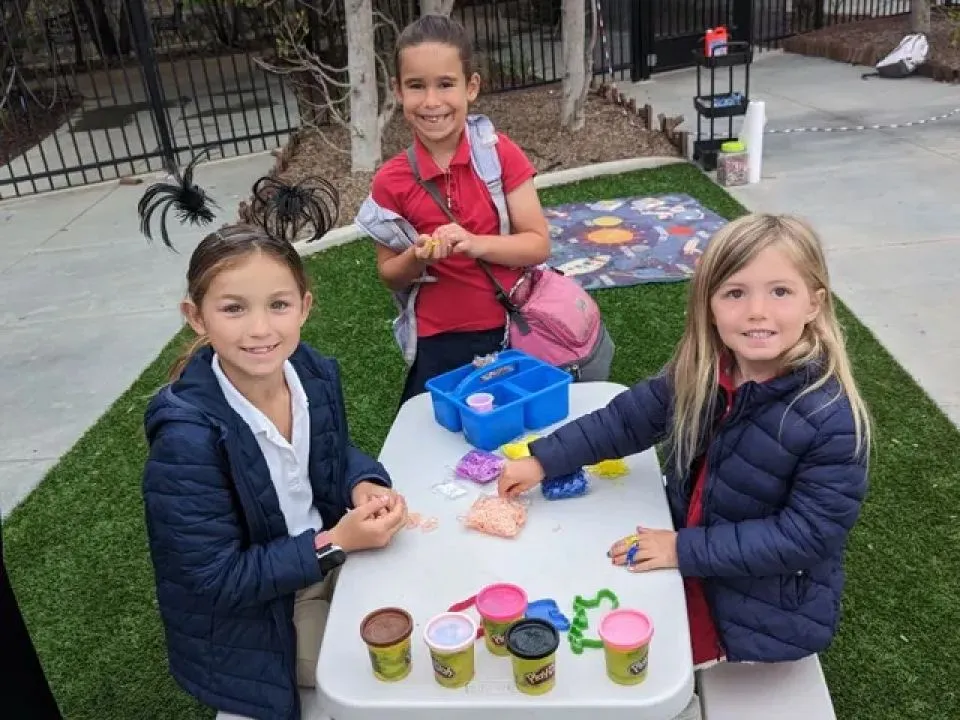
For decades, technology has played a central role in how schools market their educational experience. In the early days of personal computing, schools proudly showcased their computer labs, emphasizing the importance of digital literacy. Parents were reassured that their children would be well-prepared for a tech-driven future.
Fast forward to today, and the landscape looks quite different. Technology is no longer a novelty—it’s a constant presence in daily life. Children grow up immersed in digital experiences, often spending hours outside of school engaging with screens. Ironically, this shift raises an intriguing question: Could schools now create more value by offering something technology cannot—intentional, screen-free learning environments?
The Value of Hands-On Exploration
While technology is designed to be seamless and efficient, the real world thrives on unpredictability. Children learn best when they interact with tangible materials that don’t always behave as expected. A watercolor painting that unexpectedly blends into new shades, a block tower that collapses, or a paper airplane that doesn’t fly as intended—these moments spark deep curiosity. They lead children to ask “why?” and “what if?”—questions that structured digital experiences often fail to elicit.
Instead of focusing solely on technological access, schools have an opportunity to differentiate themselves by fostering something even more foundational: curiosity. Unlike coding or digital skills—which can be learned at any age—curiosity is a mindset that must be actively nurtured. It is the driving force behind exploration, discovery, and problem-solving, but it doesn’t emerge in isolation. It requires an environment that encourages risk-taking and embraces the unknown.
Curiosity and Risk: A Powerful Connection
Being curious means venturing into uncertainty, asking questions without immediate answers, and sometimes getting things wrong. These moments of trial and error are not failures; they are integral to deep learning. Yet, in a digital world designed to minimize unpredictability, children have fewer opportunities to experience genuine trial and error.
Physical and outdoor learning environments naturally create space for open-ended exploration. A stick found on the ground can become a measuring tool, a writing instrument, or a building material—its purpose is limited only by a child’s imagination. A puddle transforms into a laboratory for observing reflection, displacement, or evaporation. Unlike digital environments, where interactions are confined to pre-programmed possibilities, the physical world allows children to modify their surroundings and witness real consequences.
Engagement: The Key to Lifelong Learning
The benefits of hands-on learning extend far beyond childhood. When people are truly engaged, they don’t simply absorb information—they interact with it, challenge it, and build upon it. This engagement becomes the foundation for innovation, whether in business, science, or social progress.
An engaged individual doesn’t just accept the status quo; they seek better ways of doing things. This mindset fuels creativity and problem-solving, qualities that are essential in an ever-changing world. Schools that cultivate curiosity and engagement are not just preparing students to consume knowledge—they are equipping them to actively shape the future.
The Social Dimension of Learning
Curiosity is also contagious. When children work together to build a structure, discuss observations about nature, or collaborate on a problem, they gain exposure to diverse perspectives. A teacher’s enthusiasm can ignite curiosity in students, just as an inquisitive student can inspire their peers to think more deeply. This dynamic creates a cycle where curiosity fuels engagement, and engagement leads to deeper learning.
Rethinking Educational Priorities
As schools look ahead, the question isn’t whether technology should play a role in education—it absolutely should. But rather than prioritizing digital access alone, schools must ensure they are also cultivating the uniquely human traits that technology cannot replace: deep curiosity, genuine engagement, and intellectual courage.
By fostering hands-on experiences, encouraging appropriate risk-taking, and providing students with real agency in their learning, schools can do more than just prepare students for the digital world. They can equip them with the curiosity and confidence to shape it.
The future of education isn’t about choosing between screens and hands-on learning—it’s about balance. In our rush toward digital fluency, we must ensure that we are not neglecting the very qualities that make learning meaningful, transformative, and deeply human.

12 comments on “Beyond the Screen: Why Schools Should Prioritize Curiosity Over Technology”